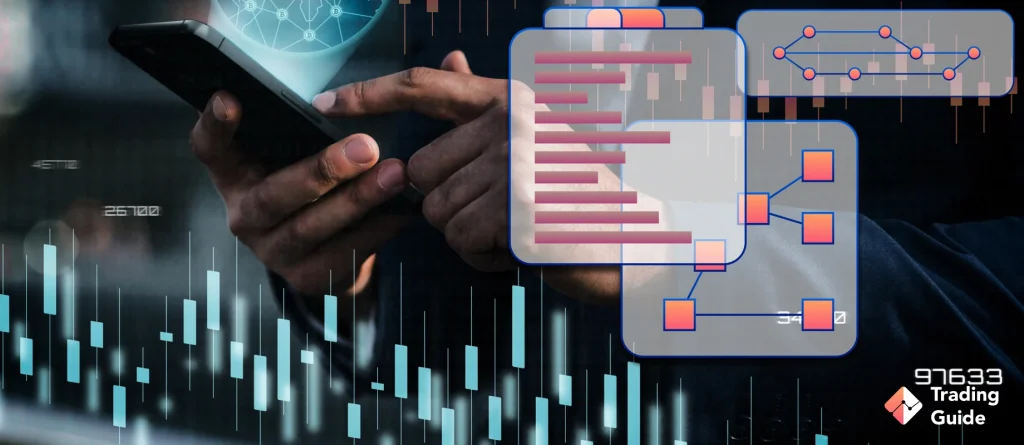The stock market has always been a captivating realm of opportunity, attracting investors with the promise of financial growth and wealth creation. Within this dynamic landscape, one particular instrument stands out: futures. Futures contracts have revolutionised the way investors engage with the stock market, and although it is a risky form of investment, individuals are earning profits from the activity.
So, what is trading futures, and how do you use futures to earn profits in the stock market? Our ultimate guide will help you understand what trading on futures is and explore a practical example to illustrate its workings. In the end, you should be knowledgeable about everything related to futures in the stock market and the risks that come with the activity.
What Are Futures?

In the financial market, futures refer to the tradable instruments included in a futures contract. Futures can be traded on regulated exchanges and brokers supporting the activity. Note that there are different types of futures, including equity index, interest rate, foreign currency, cryptocurrency, and commodity futures.
To invest in futures, you must get into an agreement known as a “futures contract”. Most participants in this agreement are hedgers and speculators trying to manage the risks of already existing investments while benefiting from the assets’ price movements.
What are Futures Contracts?

Futures contracts are standardised agreements between two parties in the financial market willing to participate in the buying or selling of a specific asset at a predetermined price and date in the future. These contracts play a pivotal role in the financial markets, providing a regulated framework for trading various assets, including commodities, currencies, bonds, stocks, and more.
Note that Futures contracts have several key components that define their structure and terms. For instance, there is the underlying asset (futures) that will be delivered or settled upon the expiration of the futures contract. Other components included in the futures contract are:
- Contract Size – Futures contracts come in standardised quantity or contract size for the underlying asset. For example, in commodity futures, it might be specified as barrels of oil or ounces of gold, while in stock index futures, it could be based on a specific index point value.
- Expiration Date – This agreement also has a predetermined expiration date, often categorised by specific months. You can choose contracts with different expiration dates depending on their desired trading timeframe.
- Futures Price – Also known as the strike price or contract price, the futures price represents the agreed-upon price at which the underlying asset will be bought or sold upon contract expiration. This price is fixed when entering the contract and remains constant until expiration.
The best element about engaging in a futures contract is the ability to apply leverage in your position. If you are a beginner, future trading on leverage means opening and controlling a futures contract position with more than your initial capital funded by your broker. This amplifies potential profits and losses, making investing in futures a high-risk endeavour requiring careful risk management.
How to Use Futures

As mentioned earlier, futures contracts serve various purposes for market participants, including hedgers and speculators. Let’s explore how futures can be utilised in these two distinct ways.
Futures for Speculation
Speculation is a common motive for engaging in futures trading. Traders who speculate on futures contracts aim to profit from anticipated price movements in the underlying asset. They analyse market trends, technical indicators, and fundamental factors to predict future price movements. Based on their analysis, they take positions in futures contracts that align with their predictions. If their forecasts are accurate, they can realise profits by buying low and selling high or selling high and buying back at a lower price.
Unlike traditional stock trading, where short selling may be subject to restrictions, investing in futures markets generally allows short selling with ease. Short selling futures involves selling contracts first and then repurchasing them later, aiming to profit from falling prices. Futures for speculation is also excellent for active trading, whereby you get to take advantage of short-term price fluctuations.
Futures for Hedging
Hedging with futures involves taking offsetting positions to protect against potential losses in the physical market. Businesses and individuals exposed to price volatility can utilise futures contracts to manage risk effectively. For example, a farmer anticipating a drop in crop prices can sell futures contracts to lock in a favourable price before the harvest. This way, even if market prices decline, the farmer’s losses in the physical market would be offset by gains in the futures market.
Similarly, investors with diversified portfolios can use futures contracts to hedge against broad market risks. By taking opposite positions in futures contracts, they can protect their portfolios from adverse price movements. For instance, if an investor expects a market downturn, they can sell stock index futures to offset potential losses in their equity holdings. If the market declines, the gains from the futures contracts can help mitigate the depreciation in their portfolio, acting as a form of insurance
Example of Futures
To illustrate how futures contracts work in practice, let’s consider an example in the stock market.
Suppose an investor anticipates that the stock market will experience a significant rally in the next three months. They believe that the value of a specific stock index, such as the S&P 500, will increase during that period. To capitalise on this expected market uptrend, the investor decides to speculate on stock index futures.
The current level of the S&P 500 index is £4,000, and the investor purchases a stock index futures contract with a three-month expiration at a futures price of £4,050. Each futures contract represents the value of the index at a specific multiplier (e.g., £250 per index point).
If the S&P 500 index rises to £4,200 by the contract’s expiration, the investor benefits from the futures contract. They can sell the contract at the agreed-upon futures price of 4,050, earning a profit of 150 index points (£250 per point x 150 points) per contract. This gain reflects the investor’s accurate speculation on the market rally.
Conversely, if the S&P 500 index declines to £3,900, the investor faces a loss in the futures market. They can sell the contract at the futures price of £4,050, resulting in a loss of 150 index points (£250 per point x 150 points) per contract. However, it’s important to note that losses in the futures market can be offset by gains in other investments the investor holds, such as stocks or exchange-traded funds (ETFs).
Overall, futures trading in the stock market involves risks, including the potential for substantial losses. As a trader, you must carefully consider your investment objectives, risk tolerance, and market analysis before engaging in futures contracts.
The Risks of Futures Trading
When considering futures and options trading, it’s imperative to understand that these markets are inherently highly leveraged and speculative. To navigate them successfully and mitigate risks, it’s crucial to familiarise yourself with the intricate contract terms and the potential for margin calls that could affect your positions.
These financial instruments demand a deep understanding of derivatives trading, and therefore, it’s advisable to engage in futures and options only if you possess the requisite knowledge and expertise. Prudent and informed participation in these markets is essential to safeguard your investments and capitalise on their potential benefits.
While futures trading offers potential opportunities for profit and risk management, it also carries certain inherent risks you must be aware of. Understanding these risks is essential for effective risk management and decision-making. Some of the key risks associated with future trading include:
- Price Volatility – Futures markets are known for their price volatility, which can lead to significant fluctuations in the value of contracts. Prices can rapidly change due to various factors, such as economic indicators, geopolitical events, or supply and demand dynamics. This volatility can result in substantial gains and losses if the market moves against your existing position.
- Leverage and Margin – One of the defining features of investing in futures is leverage. Here, traders can control a larger position in the underlying asset with a relatively small initial investment called a margin. While leverage amplifies potential profits, it also magnifies losses. If a trade goes against expectations, losses can exceed the initial investment. Proper risk management, including setting appropriate stop-loss orders and managing margin requirements, is crucial to mitigate the risks associated with leverage.
- Market Liquidity – The liquidity of futures markets can vary depending on the asset you trade and market conditions. Less liquid markets may experience wider bid-ask spreads, thus affecting your ability to enter and exit positions at desired prices. A lack of liquidity can impact the ability to execute trades efficiently, potentially leading to slippage and increased transaction costs.
- Lack of Control – Futures traders have limited control over external factors that can impact market prices. Unexpected events or unforeseen developments can quickly change market conditions and invalidate trading strategies. That is why it is crucial to be prepared for unforeseen circumstances and adjust your positions and risk management approaches accordingly.
FAQs
Futures in crypto refer to derivative contracts that allow traders to speculate on the future price movements of cryptocurrencies, such as Bitcoin, Ethereum, and more. Crypto futures enable market participants to take long and short positions on the underlying cryptocurrency without owning the asset.
Yes. Futures are derivative contracts that obligate you to enter into an agreement to buy or sell a specific asset at a predetermined price in the future. They allow market participants to speculate on price changes, hedge against risks, or manage their investment exposure.
In the stock market, equity refers to the ownership interest or shares representing ownership in a company. Equity represents a claim on the assets and earnings of the company and entitles shareholders to participate in its profits through dividends or capital appreciation. In contrast, futures in the stock market are derivative contracts that allow traders to speculate on the future price of a particular stock or stock index.
Conclusion
It’s relatively easy to get started with futures if you understand how it works and the risks involved. Like any other investment, you need the best broker to maximise your potential trading futures in the UK. You must also thoroughly research the asset you plan to trade to come up with solid strategies that could be profitable. For beginners, start with small investment capital while you are still becoming familiar with the futures market. Plus, consider diversifying your portfolio to mitigate massive losses in case a trade doesn’t work out in your favour.




I made the mistake of jumping into futures trading early in my career thinking I understood leverage, but watching a single bad trade wipe out three months of profits in less than an hour was a brutal wake-up call about how quickly those margin calls can destroy you.